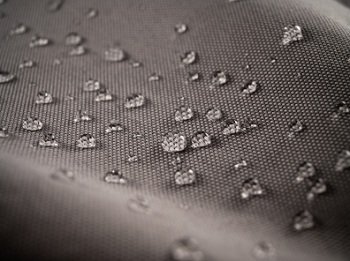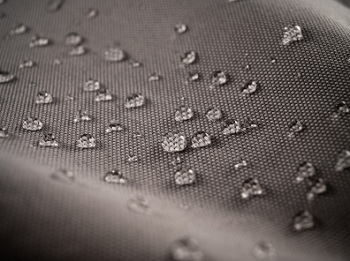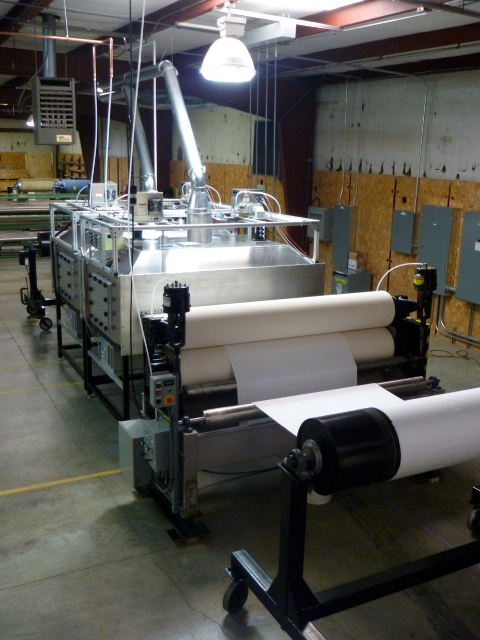andwithoutLandexCoatFlameRetardantCleartreatment-300x192-cropped.jpg)
New aqueous transparent FR coating
Disruptive RST technology company Alexium has begun the commercial roll-out of its flame retardant, oil and water repellent nylon, which it says has met key technical milestones for flame retardancy, water repellency and durability.

24th January 2012
Innovation in Textiles
|
New York
 Disruptive RST technology company Alexium has begun the commercial roll-out of its flame retardant, oil and water repellent nylon, which it says has met key technical milestones for flame retardancy, water repellency and durability.
Disruptive RST technology company Alexium has begun the commercial roll-out of its flame retardant, oil and water repellent nylon, which it says has met key technical milestones for flame retardancy, water repellency and durability.
The company is aiming to address demand from the U.S. military, which currently has 1.4 million soldiers serving on active duty and 800,000 soldiers on reserve duty, as well as commercial customers in the U.S. and abroad.
Significantly, the company anticipates a combined market demand of at least 4 million linear yards per year, with high profit margin potential.
“We clearly see where our FR treatments can make an impact in the marketplace,” chief operating officer Stefan Susta said.
“It’s a revolutionary approach and very different from any other FR treatment. After transitioning the technology to licensees for nylon, we will be exploring applications on other synthetic fabrics and blends.”
The company now plans to begin larger demonstration runs for interested partners and enter into certification testing for military and commercial customers.
In the coming months, Alexium will be negotiating licence agreements with partners to deliver flame retardant nylon treatment capabilities to fabric producing partners.
Susta told Proactive Investors this week that Alexium is currently in a number of discussions with potential partners and the company is seeking partnerships in other geographic locations for certain applications with several commercial partners that manufacture and supply the fabric.
“There’s a significant market opportunity that we’re chasing and I think we’re extremely close in applying the technology that we’ve developed here in translating it to other markets as well that use nylon not just for military apparel,” he said.
 Protective nanocomposite char layer
Protective nanocomposite char layerThe eco-friendly flame retardant treatment is based on a new flame retardant mechanism that Alexium has discovered and developed for nylon fabrics. The nylon treatment offers flame retardancy by the formation of a protective nanocomposite char layer. This char layer is also said to prevent any dripping or melting, which is characteristic of many synthetic flame retardant fabrics.
Notably, this performance is provided without using halogenated chemicals which are under increased scrutiny in the U.S. and Europe because of their potential impact to the environment and public health.
“While heavy back coatings are currently available for rendering nylon flame retardant, they have limited application due to their high weight and impermeability,” Alexium said.
“Due to the inherent advantages over other fibres, nylon remains the top choice for many outdoor apparel systems, including the cold weather clothing systems, which are issued to each core soldier in the U.S. military.”
Susta said this was just one of several initiatives Alexium was working on. “We are working on commercial roll out of ballistic fabric treatments for repellency. Those are high end fabrics used in a number of locations and for different applications,” he said.
“We are working on a number of things, some also non-textile related and we will be moving into some of those applications as well.”
Alexium’s Reactive Surface Treatment (RST) technology, which combines microwave curing with novel chemistry, is the basis for this new topical fabric treatment.
Earlier this month Alexium signed a new Cooperative Research and Development Agreement with the U.S. Air Force Research Laboratory in Florida to continue to develop and commercialise the patented RST technology.
RST is a process, developed initially by the U.S. Department of Defense, which allows for the surface modification and attachment of nanoparticles or multiple chemical functional groups to surfaces or substrates to provide functions such as water proofing, oil proofing, anti-microbial, non-stick and UV protection.
The collaboration is expected to result in greater soldier protection from chemical and biological threats, and improved materials used in military and commercial applications.
Source: Proactive Investors

Business intelligence for the fibre, textiles and apparel industries: technologies, innovations, markets, investments, trade policy, sourcing, strategy...
Find out more